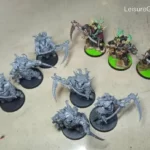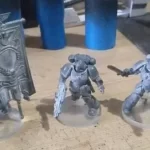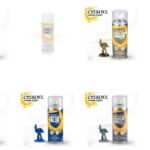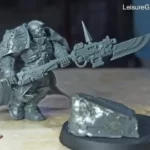primer’s color | What color to prime miniatures and models
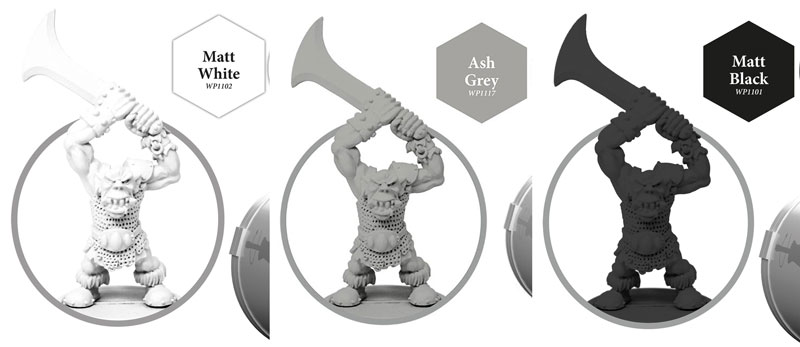
Primer gives the paint something to stick to. But can you really prime your miniatures with any color primer?
Most painters believe that the primer color does not matter, especially if you put enough paint on the miniature. However, some think otherwise.
In this guide, we will answer this simple question, what color primers should you use for your miniatures and models?
What colors are there for miniature primers
Like the paint, primers also have tons of colors, from black to white, brown, and even colored spray primers from brands like Army Painter.
But, even with this large color range, the main ones used by the plastic model and mini painters are Black, Grey, and White.
- Black
If you want to speed paint your mini or are painting for a tabletop display, black primers give your paints the perfect coverage they need to look display-worthy. However, black works best for dark color paints. They are impossible to work with light colors because even with five coats, light paints like yellow still won’t blend well with dark undertones.
If you are using metallic paints, use black primer because they pop better over black. Another advantage of black is that if you miss painting a spot, black is usually harder to notice than white.
Besides this, black tends to be used by many painters because it makes it easier to ignore unpainted areas, and it fills in open cracks in the model. If you’re doing a zenithal highlight prime and glazing color, black primer also works great.
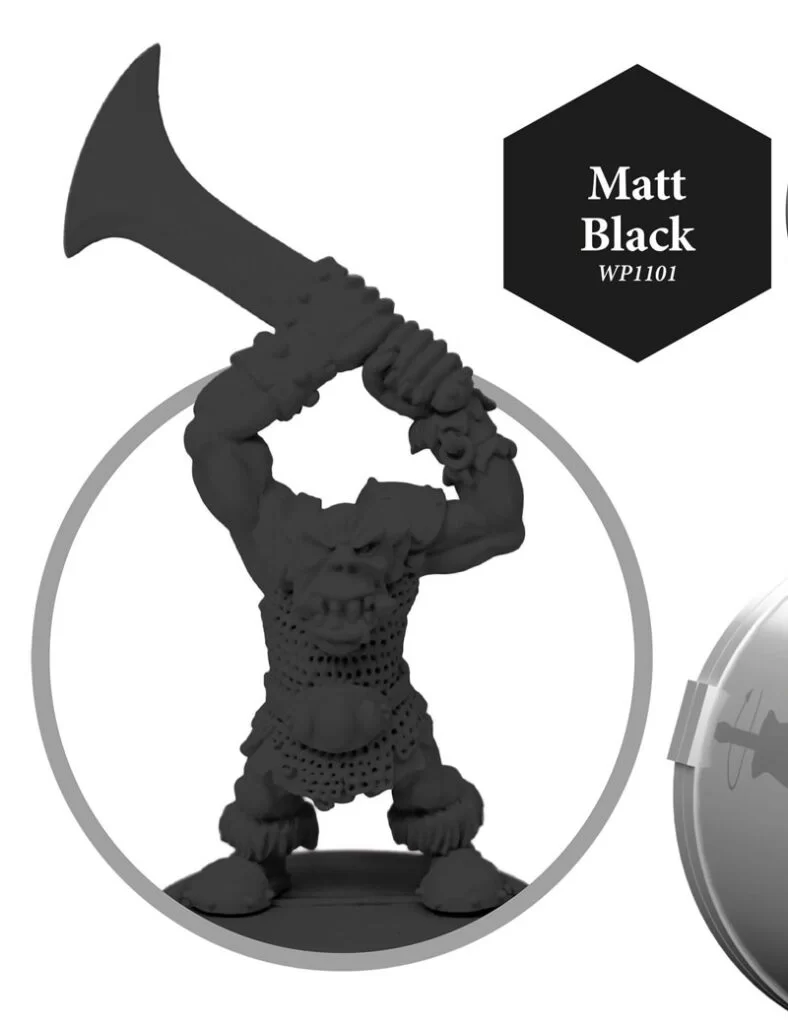

- White
If you need to work with light-colored paints, white color primers are best. It makes getting the right color scheme possible. Another advantage of white primers is that, like black, they make your paint look good, especially if you’re doing zenithal highlights.
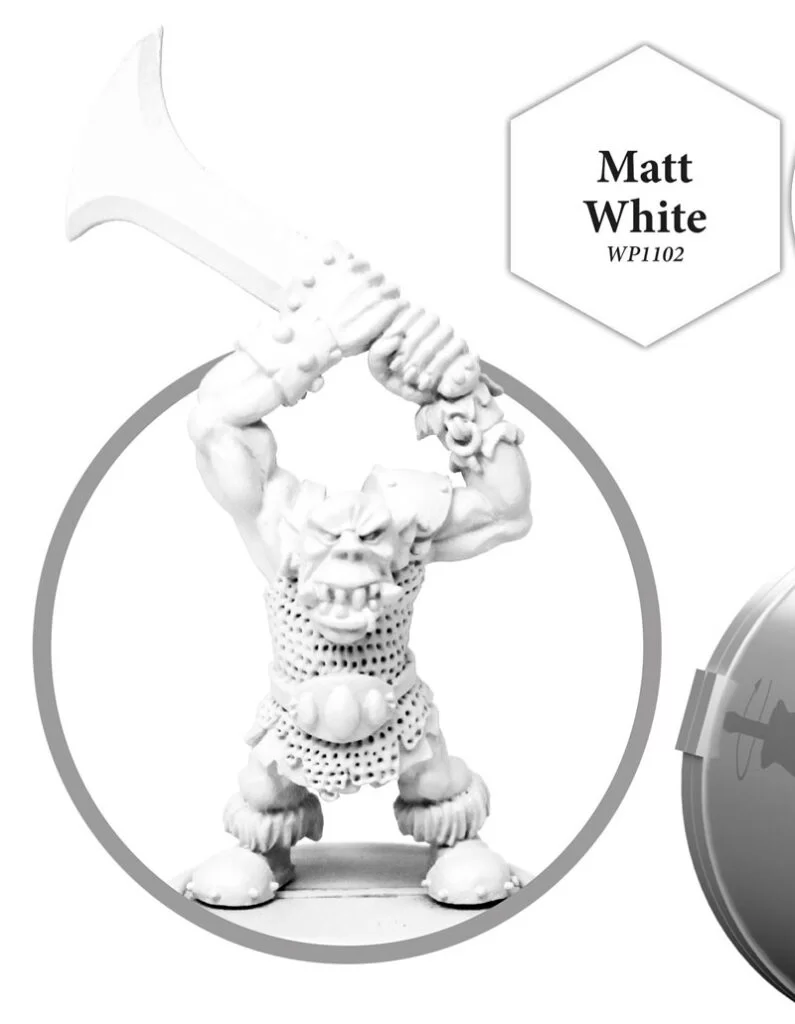

- Grey
Grey primers are the middleman between black and white primers. They don’t look too dark or too light. Instead, their medium dark and medium light surface mean you can efficiently balance light, dark and high contrast colors no matter the paint scheme.
However, if your minis are already grey, grey primers will only look dull. If you have a Bloodborne miniature, you know grey primers won’t work on them since they are already gray. With grey over grey, it will be really hard to see if the minis are properly primed or not.
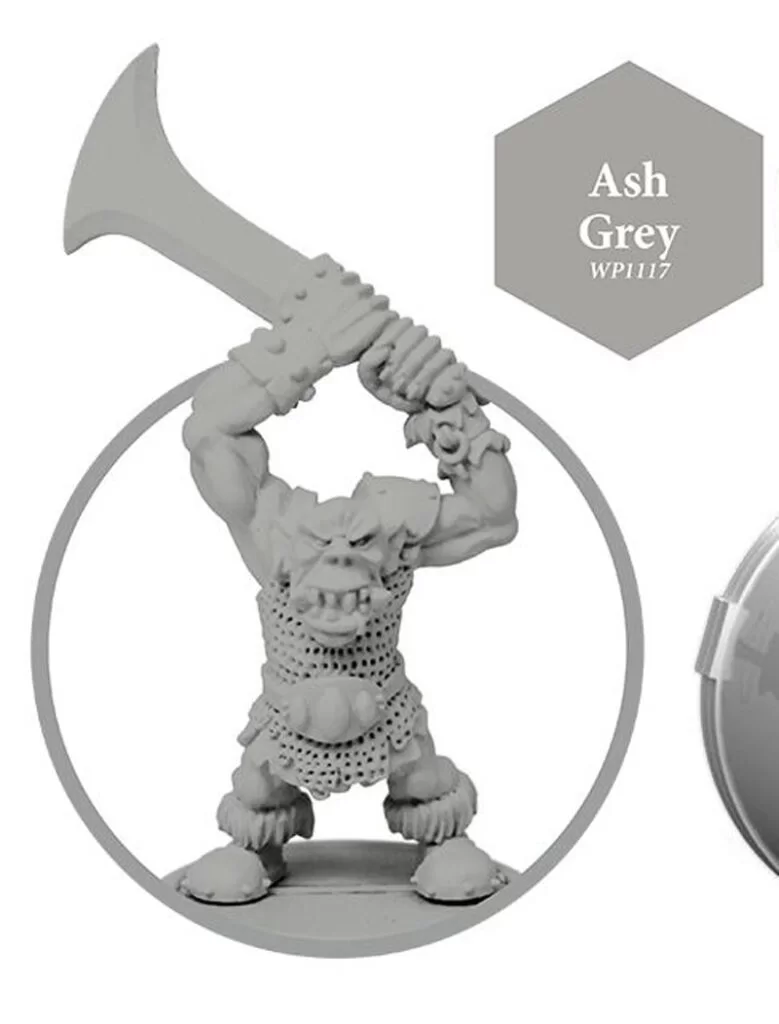

- Colored Primer
Unlike the black, white, and Grey primers, color primers are more of a time-saving measure to painting minis. For instance, if you plan to paint with green, color primers help you get more precise coverage than when painting with white, black, or Grey. With medium grey primers, the chances of leaving spots that stick out are high.
choose which primer color to use on your miniature
Before choosing primer colors, understand that it can take a lot of layers to go from black to white or vice versa.
So, to choose the perfect primer color that matches your miniatures, think about what colors you want to start at the base of your mini and try to get something close to it.
Examples of primer colors to go with what paint color
So, how do you know which colors will work well for your mini? It’s impossible to determine that except with a test experiment.
The good news is that I’ve tried some primer colors with my paint color, and they looked great.
To get a pure bright white color, I used a white primer under the white paint. A brown colored primer undertone with white paint helped me create a dirty/used white. If you want a deep red color, try using a brown primer under maroon paint. White primer and red paint give you a bright red color.
On the other hand, is metallic paint.
Most metallics are going to look fine over black, white, and grey primer provided they cover well. For instance, silver paints take well to any grey primer. However, this is not true for Gold paints.
Gold, like yellow, does not cover well. So, you want to work with a decent hue to aid in good coverage with thinner coats. This time, colored primers come in handy.
For gold, I often lean towards a rich brown or yellow primer depending on the color bias of the gold (browns for red gold, yellow for green gold).
Which color of primer will be the easiest to paint on
For most painters, grey is the easiest to work with since white may make their colors look too bright, and black may take many layers to paint.
However, since grey is the middle ground between white and black and they work well with both light and dark paints, they are easier to work with.
On the other hand, the easiest color of primer to work with will depend on what you are painting.
For instance, when I paint an army I usually prime with grey, so I don’t have to struggle with blending colors for good coverage. If I intend to paint my model yellow, red, or any other bright color, I prime it white. Black primers will most often come bandy for my 6mm figures because those are just broadly highlighted, and the black makes a solid shadow.
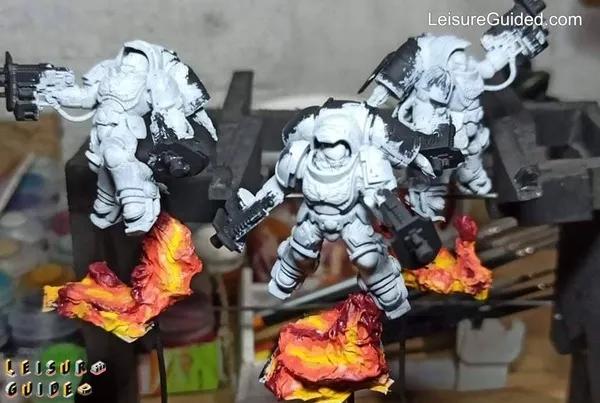

What primer color will give the true color of the paint
As mentioned earlier black primers may make the paint look too dark, while white primers may make them overly light.
For this reason, retaining the ‘true color’ of the paint can be extremely difficult.
Most paints are translucent to some extent, so to get a ‘true’ color you will need to build up multiple thinned coats of paint.
However, I have used white and grey primers severally, and they do give you the true color of the paint.
Why? Most colors like Yellow and Red won’t always cover well. When painted over a nice light grey color, they may seem like the right color until they dry up and look a bit deep compared to the real color. On the other hand, when you add multiple coats of paint, no matter how light it is, you won’t have a problem getting the true color of the paint.
Honestly, does it matter what color primer you choose?
Well, for many painters, the color of the primer won’t really affect the priming process since the main objective of priming miniatures is to give the model something the paint can bond effectively to.
While primers are a good foundation for paints, the truth is that the primer color you choose can seriously affect the tone of the paint and the finish you get.
For instance, if the end goal is to get a bright red, orange, yellow, or white color and you use black, the chances of adding over 50 coats on the miniature without getting the right color scheme are 100%.
Dark primers work with dark paints, while white works with light paints.
The only reason painters will choose to use black tones under light paints is if they aim to get more contrast out of the colors. So, if you aim for an ashen color, with just a few layers of white paint, it will be easy to create.
Conclusion
Priming miniatures is a good way to ensure the outer paint layers adhere well to the kit. However, not all primers will work well on the mini.
If you want more of a pop on your paints, use white primers, but if you want to achieve darker tones, black primers are more forgiving.

